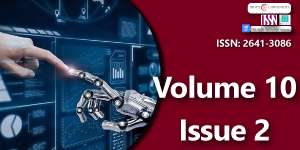The Generational Divide in AI Adoption: How Age Shapes the Integration and Use of Intelligent Tools?
Main Article Content
Abstract
Abstract
With the outbreak of the coronavirus pandemic, which brought work processes worldwide to a standstill for a short time, the working world was forced to take a previously unknown and unintentional full brake. Companies were forced into a situation where employees were quarantined, or complete cities and towns were sealed off for a short time to protect them from the spread of the virus. However, as with disadvantages, advantages can also come from an unintended situation, and so, albeit unintentionally, some major and some minor grievances were uncovered in all companies. The grievances addressed in this statement are primarily the slow introduction of digital options in the context of meetings and division of labor. Until 2020, these important activities in particular were still carried out by means of personal contact and exchange. Since the pandemic, where personal contacts were severely restricted and large meetings were hardly feasible, a change in thinking was established at the management level. The aim was to eliminate these shortcomings using quick solutions, and digital solutions had to be resorted to without further ado. Meetings were held online rather than in person, and work was divided using work-sharing programs. During the course of the presentation, it was noted that meetings can be held much faster and, in some cases, more effectively when they take place via online meetings. In addition, the possibility of working from home was introduced by companies in order to respect quarantine regulations and at the same time have a way to continue working. Arriving in 2025, companies are now faced with the possibility of implementing the knowledge and insights gained during the main period of the pandemic, in such a way that with the options offered for digital work completion, not only are the current regulations served, but also the company itself benefits. Companies mainly benefit when the work performance and productivity as well as the motivation of the employees is right. For this reason, large companies such as Apple or Google are introducing ways to increase productivity in a targeted manner. In order to achieve the best results, they rely on machine learning and artificial intelligence. This paper will address the current mainstream possibilities of digital work solutions and show that artificial intelligence and machine learning have an impact on the division of labor and should be part of the state of the art in most companies in the coming years to be competitive in the future and at the same time attractive for existing and new employees. Furthermore, the study examines the extent to which the age of users influences their use of AI tools. Are we therefore facing a generational divide?
Downloads
Article Details
Copyright (c) 2016 Rieder E.

This work is licensed under a Creative Commons Attribution-NonCommercial 4.0 International License.
Czaja SJ, Charness N, Fisk AD, Hertzog C, Nair SN, Rogers WA, et al. Factors predicting the use of technology: findings from the Center for Research and Education on Aging and Technology Enhancement (CREATE). Psychol Aging. 2006 Jun;21(2):333–52. Available from: https://doi.org/10.1037/0882-7974.21.2.333
Mitzner TL, Boron JB, Fausset CB, Adams AE, Charness N, Czaja SJ, et al. Older adults talk technology: technology usage and attitudes. Comput Human Behav. 2010 Nov;26(6):1710–21. Available from: https://doi.org/10.1016/j.chb.2010.06.020
Park DC, Reuter-Lorenz P. The adaptive brain: aging and neurocognitive scaffolding. Annu Rev Psychol. 2009;60:173–96. Available from: https://doi.org/10.1146/annurev.psych.59.103006.093656
Nikou S, Agahari W, Keijzer-Broers W, de Reuver M. Digital healthcare technology adoption by elderly people: a capability approach model. Telemat Inform. 2020 Jan;53:101315. Available from: https://doi.org/10.1016/j.tele.2019.101315
Venkatesh V, Morris MG, Davis GB, Davis FD. User acceptance of information technology: toward a unified view. MIS Q. 2003 Sep;27(3):425–78. Available from: https://doi.org/10.2307/30036540
Selwyn N. Reconsidering political and popular understandings of the digital divide. New Media Soc. 2004 Jun;6(3):341–62. Available from: https://doi.org/10.1177/1461444804042519
Davis FD. Perceived usefulness, perceived ease of use, and user acceptance of information technology. MIS Q. 1989 Sep;13(3):319–40. Available from: https://doi.org/10.2307/249008

